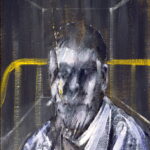A new biography of Alexander von Humboldt
WE HAVE JUST celebrated approximately the fourteen billionth New Year that the universe has enjoyed since it came into existence. A few hundred million years after that, what we now know as the Milky Way galaxy started to form. Much later, about ten billion years after the presumed Big Bang, our solar system coalesced out of gravitationally “pregnant” cosmic dust, followed shortly afterwards by planet earth. Soon, despite the brutal heat of the boiling rocks, the first single-cell life forms came into existence. Nobody knows why, or how, or even exactly when.
Neither does anyone really know why it took a further two billion years for earth to develop atmospheric oxygen and to evolve multicellular life. It was not until a further thousand million New Years had passed uncelebrated by Jackie Bird that the first animals and plants evolved. They were led out of the primordial darkness by the green seaweeds which are still with us in a myriad different forms.
A further five hundred million years went by before life suddenly exploded into a staggering variety of different species in what is today known as the Cambrian Explosion. Once again, nobody knows why. Another thing nobody can explain with confidence is why that was followed by so many catastrophic mass extinctions. Around 440 million years ago about half of all the life forms on earth were wiped out for no apparent reason.
Eighty million years after that, the Late Devonian extinctions wiped out the majority of all the remaining species, once again with no-one now able to offer a convincing explanation. A further ninety million years later the Permian-Triassic extinction killed off more than 80% of all marine species—though not the seaweeds—and nearly as many land ones.
With events speeding up, it was only another 50 million years before the Triassic-Jurassic extinction wiped out almost as high a proportion of species as its predecessor had. Yet again, this was an event for which no explanation has been widely accepted. Not even Karl Marx had a scapegoat for that one, and of course Brexit had yet to happen.
Finally came what is known as the Cretaceous-Maastrichtian extinction a mere sixty-five million years ago. Despite its name, it had nothing to do with the European Union, being so named because a Belgian geologist called André Dumont found the fossilised remains of a giant sea monster near Maastricht. Now known as the Mosasaurus, these huge creatures—some as long as a small CalMac ferry—swam the world’s oceans for fifteen million New Years; fossils have been found as far afield as Morocco and South Dakota. Without global cooling, those areas would still be under water today, as would Westminster, Washington DC and Holyrood, which would all now be covered with kelp, sea anemones and crab droppings, to the general benefit of mankind.

This most recent of the great extinctions accounted for three-quarters of all species known to have existed before it, including the Mosasaurus and almost all of its fellow dinosaurs except birds. The archaeopteryx was an ancestor of the gannet. The cause of this catastrophe is now widely thought to have been a nine-mile-wide asteroid which hit the gulf of Mexico, travelling at 50,000 miles an hour. The impact released energy equivalent to that of five million nuclear detonations.
But it was to be another 63 million years before Homo erectus appeared. As Keir Starmer doubtless knows, this Homo was the original tool-maker, developing the stone hand-axe that was to change the world by starting the process in which the brain took over from the body as the source of human power. Toolmaker One had a cranial cavity that was approximately the same size as the Prime Minister’s, though it was slightly exceeded by that of Neanderthal Man, who evolved another million years later and developed the faculty of speech.
If that sounds recent in the longer sweep of history, it is important to bear in mind that the emergence of Homo sapiens is even more recent than that. It emerged on the East African savannah just 300,000 years ago, possibly less. However, not much was achieved in terms of the rise of civilisation for a very long time. Agriculture did not develop in non-equatorial latitudes until after the most recent period of global warming, at the end of the last Ice Age, about 10,000 years ago. It is thought the population of the entire earth then was about 2 million, which is less than half that of Nairobi today.
So, for 13,999,990,000 years the earth lived without settled communities and the need for impersonal rules of general behaviour, what we now call “law”. Nothing much happened. But as soon as communal life established itself, and primitive proto-law emerged as an organising force, we started making tools more sophisticated than hand axes. Within five thousand years we had invented writing. Thus 98.75% of the earth’s history went unrecorded, even on stone tablets. Four thousand years after that, paper and printing changed the way both law and authority were thought of and exercised because written material could now be circulated.
The same happened more recently when electronic communications started to create an inter-connected global community out of many previously independent national units, though this had the disadvantage of making law harder to enforce. But the lucky part of humanity was able to retain control over things they had invented, and not have them stolen by more powerful neighbours. Without that, human development would have been very different, and might not have happened at all.
The most spectacular result of the ability to advance technology on the basis of control over intellectual property has been the James Webb Space Telescope. That remarkable instrument, a million miles away in space, has enabled us to study the earliest stages of the evolution of the universe, from its probable origins in the alleged Big Bang, using infrared telescopy of adequate quality for the first time.
The point I wish to stress is that almost everything I have written above was unknown to the most sophisticated European scientists as recently as the late eighteenth century. But the more that has been discovered since then, the more we realise there is yet to discover. Logically, that means that by the time we know everything, we will have come to realise that that we know nothing. Is the mind of God like the inside of a ping-pong ball?
But I digress. The really important point is that rational, or “sapient”, life on earth is recent. That is the overarching thought which emerges from Alexander von Humboldt: a Concise Biography by Andreas Daum, the latest book on one of the first explorers to help revolutionise humanity’s view of its own origins.

Humboldt was born in Berlin in the Kingdom of Prussia in 1769, the same year as Napoleon was born in Corsica. In a standing rebuke to the degeneracy of modern educational ideas, the man who was to become one of the most important scientists in world history, never went to school. Professor Daum describes some of the tutors that Alexander and his elder brother Wilhelm were given:
“Johann Christian Kunth stood out among the boys’ teachers. In his Lutheran background and appetite for Bildung (self-cultivation through education and knowledge), he embodied the central role that the Protestant bourgeois family played in the social basis of education in the state of Prussia… Alexander benefited especially from his interest in geography. Kunth arranged for private sessions with Berlin scholars and opened doors for Alexander to new intellectual worlds. Christin Wilhelm von Dohm, later famous as an advocate for the emancipation of the Jews, familiarised the brothers with questions of national economy, trade and statistics. This thematic range allowed them to perceive global economic interconnections beyond Prussian mercantilism.” (p. 13)
If Humboldt became known for one thing beyond his investigative travelling (mostly in northern Europe, Russia and the Americas) it was his more general idea that the whole of natural history is interconnected, that all life has common roots. His lack of formal schooling helped keep him out of the mental tramlines of his time. So too did the fact that he never finished a university course or took a degree.
Humboldt enrolled at the new university of Göttingen in the summer when the French revolution broke out, but left after spending much of the next two and a half years travelling and meeting interesting scientists who were happy to share their knowledge with him. He was his own “director of studies”, deciding about his reading and travel on the basis of his own curiosity, which is the only honest way to study.
“For Humboldt the natural scientist, his weeks in England were the most productive,” Daum says. (p. 23) He met Joseph Banks, the botanist who had travelled on James Cook’s voyages, and Henry Cavendish, who discovered the properties of hydrogen. Neither man, incidentally, ever took a university degree either.
Humboldt then went to Paris where he met the great chemist Antoine de Lavoisier (whose only degree was in law). This French aristocrat “explained the role of oxygen in combustion.” (p. 24) It was he who discovered the relationship between oxygen and combustion.
Cavendish was an aristocrat too—son of the Duke of Devonshire—while Banks came from a wealthy gentry background in Lincolnshire. The four of them were amongst the most influential figures in world science, yet there was not a single “qualification” between them. Clearly there was something to be said for the freedom to follow your own interests in the pre-rational age.
Once the limiting prejudices of mechanical rationality and materialism arrived in Europe with the French revolution, that started to change. Inferior people were allowed to judge the activities of their superiors, about whose work most knew little or nothing. Lavoisier was guillotined on a trumped up charge in the last days of the Terror in 1794. The fact that he was officially exonerated less than two years later did not help science recover the genius who the “democratic” mob had killed in their rage to impose liberty, equality and fraternity.
Once again, the thought recurs of how recent all these new discoveries were in the cosmic timeframe. Humboldt lived in a period when nobody was sure how rocks had come to be. Were they laid down on the ocean floor—a theory known as Neptunism—or did they have volcanic origins—Vulcanism? Geology was then known as “geognosy” and was a by-product of raw material mining.
Edinburgh’s James Hutton was a pioneer in the same field at about the same time. Like Humboldt though independently of him, Hutton came to the conclusion that the world was an interconnected system, embracing both biological and geological processes. His reputation in this respect was another victim of the new fad for rationalism in the nineteenth century age of the machine.
Another lesson for modern man is that Humboldt avoided politics all his life. He took no interest in it and had no shred of nationalism in his approach to scholarship. His favoured place of work was Paris, and he wrote many of his books in French. But he was still happy to return to Germany regularly, and settle there in later life. “Humboldt was the catalyst for a politically fraught but lasting entanglement of German and French culture. He resisted all attempts to fix ideological and political boundaries. To that extent, his declaration of allegiance to France as his ‘second fatherland’ was a rhetorical gesture that reflected his pragmatic view of the world.” (p. 129)
This book is a fascinating and readable account—partly due to its brevity—of the life of an important scientist much ignored by modern scholarship, even in Germany (as the Guide to Further Reading emphasises). It should be compulsory reading for the intellectual pygmies who still inhabit the Holyrood ghetto which so catastrophically mismanages the Scottish educational system.
Everything is geared to making children “job ready” when education really ought to be based on stimulating curiosity and teaching the ability to communicate enthusiasm for the subject you are curious about. Those were the primary virtues which Humboldt embodied all his life. They are even more relevant in the digital age when materialistic rationality has gone on the offensive against creativity and intellectual freedom.
If you appreciated this article please share and follow us on Twitter here – and like and comment on facebook here. Help support ThinkScotland publishing these articles by making a donation here.









